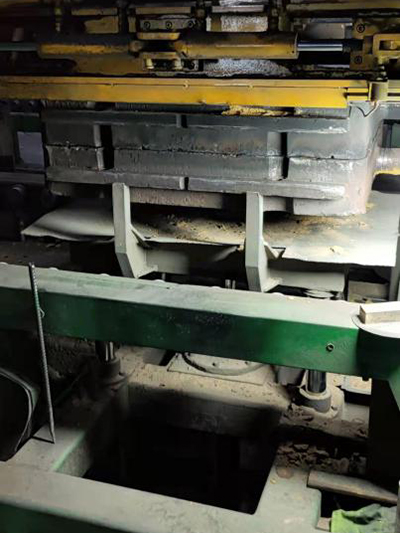3D Sand Printing Casting Revolutionizing the Manufacturing Process
In recent years, 3D printing technology has made significant advancements, propelling various industries toward innovative manufacturing solutions. One of the most promising applications of this technology is 3D sand printing casting. This method streamlines the traditional casting process and enables manufacturers to create complex shapes with precision, reducing waste and enhancing efficiency.
Understanding 3D Sand Printing Casting
3D sand printing involves the use of digital models to create intricate sand molds. Unlike traditional casting methods, which often rely on physical patterns and extensive manual labor, 3D sand printing utilizes a computer-controlled printer that layers fine grains of sand bonded with a special adhesive. This technology allows for the rapid production of molds that can be used for metal casting, eliminating the need for expensive and time-consuming patterns.
The process begins with a digital design of the desired part. The design is then sliced into layers, which the printer uses to create the mold, layer by layer. Once the mold is complete, it can be used to cast various metals, including aluminum, iron, and steel. This versatility makes 3D sand printing casting an attractive option for various applications, from automotive components to artistic sculptures.
Advantages of 3D Sand Printing Casting
One of the most significant advantages of 3D sand printing casting is its ability to produce complex geometries that would be difficult or impossible to achieve with traditional methods. This capability enables manufacturers to design lighter and more efficient parts, as intricate internal structures can be incorporated into the designs without additional cost or complexity.
Furthermore, 3D sand printing significantly reduces material waste. Traditional casting processes often involve the creation of excess material during pattern-making and subsequent machining. In contrast, 3D printing creates only the necessary mold, minimizing waste and contributing to more sustainable practices in manufacturing.
3d sand printing casting

The time savings associated with 3D sand printing casting are also noteworthy. Traditional casting can take days or even weeks to create molds and produce parts. With 3D sand printing, manufacturers can create molds in hours, accelerating product development and allowing for faster iterations in design. This speed is particularly beneficial in industries where rapid prototyping is essential, such as aerospace and automotive.
Challenges and Considerations
Despite its many advantages, 3D sand printing casting Faces certain challenges. For instance, the cost of initial equipment and technology can be high, which may deter some small and medium-sized enterprises from adopting the process. Additionally, while the technology continues to improve, there may still be limitations in terms of surface finish and resolution compared to traditional methods.
Moreover, the choice of sand and binder materials is crucial for achieving the desired casting quality. Researchers and engineers are continually exploring new materials to optimize performance and sustainability, which is an area of ongoing innovation in the field.
The Future of 3D Sand Printing Casting
As technology advances, it is expected that 3D sand printing casting will become more widely adopted across various industries. Its potential to reduce costs, streamline production processes, and promote sustainability aligns well with the increasing demand for efficient manufacturing solutions.
In conclusion, 3D sand printing casting represents a revolutionary shift in the manufacturing landscape. By combining the benefits of advanced digital technology with efficient material use, this innovative approach to casting is set to transform how products are designed and produced. As the industry continues to evolve, we can anticipate even more exciting developments that will further enhance the capabilities and applications of 3D sand printing casting, making it a crucial player in the future of manufacturing.
Post time:نويابىر . 30, 2024 03:49
Next:صب الرمل الجاف
